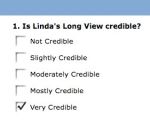May 8, 2009
Sealing Moment
 One of the best pieces of coaching advice that I received from one of my mentors is “find the teachable moment.” My mentor taught me that we could amplify learning by delivering education just in time. As leaders and mentors, if we pay attention, we can often observe the moment of realization and then amplify the learning by reinforcement.
One of the best pieces of coaching advice that I received from one of my mentors is “find the teachable moment.” My mentor taught me that we could amplify learning by delivering education just in time. As leaders and mentors, if we pay attention, we can often observe the moment of realization and then amplify the learning by reinforcement.
Today, as I participated in “A Celebration of Giving” by my son’s 7th grade class, I realized that there is one better – create a sealing moment. Let me explain…
Over the past many months, the 7th graders embarked on an integrated curriculum project to raise awareness for justice in and repair of the world. Students each selected a charitable organization that was meaningful to them. They learned about their organization through research, interviews, and discussion. Once engaged, they advocated and raised funds for their respective organizations. These 7th graders collectively raised >$29,000 to support 25 different worthy organizations – amazing! Since they raised the money together, they divided the money among their many organizations. They prioritized allocation funding to the different organizations. None received the same amount.
As I listened to the students speak today, I reflected on the comments that my own son made over the final few weeks during the allocation process (“it was hard…”), I realized that the allocation process was in fact the sealing opportunity for them. Although they learned much through the preparation of research papers and demonstrated commitment to their organizations through formal oral presentations, it was not until they had to lobby each other for allocation support that their passion and advocacy truly kicked in. Although it would have been “easier” – less painful, less acrimonious, less divisive – to simply divide the money equally, it would have lessened the learning. Sealing came from the harder process of truly engaging, participating, and negotiating.
Their sense of fairness and justice required each of them to listen objectively to the others and to regard their own project as one among many. They had to decide the minimum level of funding for every project and the maximum funding for the highest priority project. Although their compassion, commitment, and ability to be proactive was excellent before allocations, it was very clear that those attributes increased 10-fold by having to negotiate. They had to both advocate for their own organization and be objective toward the others. Their compassion, commitment, and ability to be proactive were sealed through the negotiation process of allocations.
As leaders, we know that it is imperative to achieve “buy-in” because it creates commitment and loyalty. This point was clearly demonstrated by these 7th graders. Their learning was amplified 10-fold by being part of the decision-making.
As leaders, if we truly desire commitment and loyalty, we must take the long view to ensure that we create sealing moments. We must ensure that the hard work of active participation, engagement, and negotiation is not short-circuited by the need for expediency or ease.
What are you doing to ensure active participation, engagement, and negotiation?
March 16, 2009
Credibility

This weekend, a friend of mine pointed out to me that my technology management advice does not have the credibility of Jack Welch. He’s right – I’m no Jack Welch. Nevertheless, I thanked him profusely, because it made me realize that I need to communicate my superpower (what value I provide).
I work at the “action level” building processes and products deeper in the technology organization than Jack typically works (at least these days). That’s not to say that I don’t respect his insights and wisdom, I do. However, it is the “action level” niche for which I am passionate and for which my insights are most relevant. In a sense, I have simply made the world smaller – I am not competing with Jack Welch.
In the process development marketplace, what I sell is confidence: confidence to staff that management makes good decisions, confidence to management that goals are being met, and confidence to investors & media that the organization can do what it says it will do. That is my superpower. To that end, it is my sincere goal to own the word-pair “process confidence” in my niche. (Thank you Scott, I crystallized my word-pair using your worksheet: 24 Questions to Discover Which Word You Own).
Have I achieved the elite (10,000+ hour) level (in process confidence) that Malcolm Gladwell talks about in his book Outliers: The Story of Success (pg. 39, “….the thing that distinguishes one performer from another is how hard he or she works. That’s it. And what’s more, the people at the very top don’t just work harder or even much harder than everyone else. They work much, much harder.”)? I have certainly invested in learning, practiced extensively, and made changes in my environment to ensure that I continue to ratchet up my game. This blog is part of that process. I hope that you find value here. Let me know what you think.
March 1, 2009
Identity Matters
As our social and professional networks grow larger with time, our human need for identity is ever more paramount. I learned this lesson from my many colleagues in the technology workplace.
Even though technologists have been stereotyped as robotic (logical, rational, and devoid of emotion), the reality is that having a sense-of-purpose, a unique identity, and an ability to know how we are being measured is critical for our professional success. These key attributes are summarized (albeit in the negative form) by Patrick Lencioni in his book, “Three Signs of a Miserable Job” as irrelevance, anonymity, and immeasurement. Just like the employees in Lencioni’s tale, without a clear role in the organization, technologists are challenged to understand their future (the long view) and can readily become hyper-sensitive, wary, and less-productive.
Step #1 for success as a technology manager is creating the long view on behalf of staff and colleagues – providing and nurturing a sense-of-purpose, a unique identity for each technologist, and a measurement system that provides effective performance feedback. It might seem too time consuming for busy professionals, but it is the single best predictor of managerial performance.


 This blog chronicles long view thinking in all aspects of life, but with special interest in technology and business.
This blog chronicles long view thinking in all aspects of life, but with special interest in technology and business.